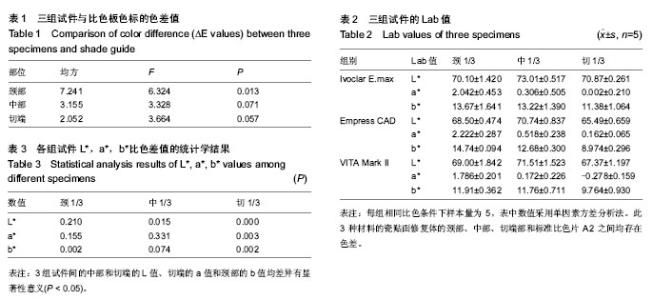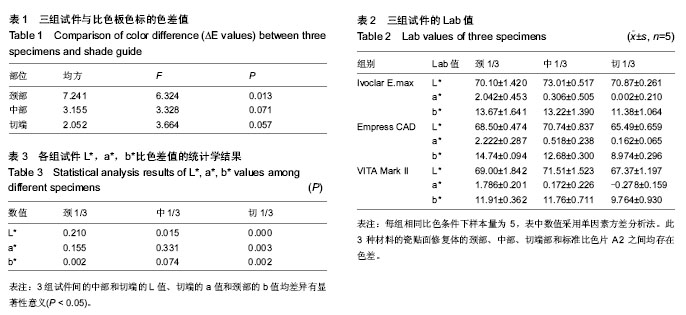| [1] Douglas RD, Przybylska M. Predicting porcelain thickness required for dental shade matches. J Prosthet Dent. 1999; 82(2):143-148.
[2] 孔凡玲,郭小文,朱洪水.全瓷修复材料半透性研究[J].中国实用口腔杂志,2009,2(6):369-371.
[3] Peumans M, Van Meerbeek B, Lambrechts P, et al. Porcelainveneers: a review-of the literature. J Dent. 2000; 28(3):163-177.
[4] 杜瑞钿,李彦,范丹妮.310个烤瓷贴面远期临床效果的回顾性分析[J].中华口腔医学杂志,2009,44(6):343-346.
[5] 陈吉华,施长溪,王玫,等.546例四环素牙烤瓷贴面修复的临床观察[J].中华口腔医学杂志,2003,38(3):199-202.
[6] Magne P,Belser U.前牙瓷黏结性仿生修复[M].北京:人民军医出版社,2008.
[7] 商维荣,高士军,袁文君.Panavia F遮色树脂黏结剂对Cerinate瓷贴面修复不同染色程度模拟四环素牙遮色效果研究[J].中国组织工程研究与临床康复,2011,15(25):4655-4657
[8] 冯海兰,徐军.口腔修复学[M].北京:北京大学医学出版社,2005.
[9] 李智勇,程祥荣,王贻宁.IPS Empress全瓷贴面颜色效果的初步研究[J].中华口腔医学杂志,2004,39(5):395-398.
[10] 吴效民,宋世卿.Vita比色板色度分析[J].中华口腔医学杂志, 1996, 31(4):227-229.
[11] 樊聪.瓷贴面修复临床应用[J].中国实用口腔科杂志, 2011,4(8): 452-453.
[12] 徐晗.4种厚度IPS e.max Press核瓷遮色性能的研究[J].广东牙病防治,2013,21(4):211-214. |



